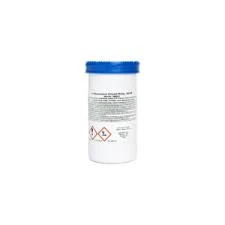poly aluminum chloride water treatment
The Role of Poly Aluminum Chloride in Water Treatment
Water is essential for life, and ensuring its purity and safety is a critical global challenge. Among the various methods and chemicals used for water treatment, Poly Aluminum Chloride (PAC) has gained significant attention due to its efficiency and effectiveness in enhancing water quality.
Poly Aluminum Chloride is a coagulant widely used in water treatment processes. It is an inorganic polymer that serves as a primary agent for the removal of suspended solids, organic matter, and turbidity from water. PAC is typically produced by reacting aluminum chloride with aluminum hydroxide, leading to a product that is more effective in water treatment compared to traditional coagulants like alum.
One of the primary advantages of PAC is its enhanced coagulation performance. When introduced to water, PAC forms a sticky precipitate that attracts and binds fine particles together, facilitating their removal through sedimentation or filtration. This process is particularly beneficial in treating surface waters that are often more challenging due to the presence of organic materials and microorganisms. Additionally, PAC operates effectively over a wide range of pH levels, making it adaptable to different water conditions.
The efficiency of PAC extends beyond mere particle removal. Its application can significantly improve water clarity and reduce the concentration of harmful substances, including pathogens. Consequently, PAC-treated water is not only visually clearer but also safer for consumption, reducing the risk of waterborne diseases. The ability to operate effectively in colder temperatures further enhances its applicability, especially in regions with varying climatic conditions.
poly aluminum chloride water treatment

Moreover, the use of PAC has environmental benefits. It produces less sludge compared to traditional aluminum-based coagulants, which translates to lower disposal costs and a reduced environmental footprint. This reduction is crucial for treatment plants, as managing sludge has historically posed challenges regarding disposal and environmental compliance.
In the context of industrial applications, PAC’s effectiveness in removing color and organic compounds is particularly noteworthy. Industries that discharge colored effluents, such as textiles and paper manufacturing, rely on PAC to treat wastewater effectively. By using PAC, these industries can meet regulatory discharge standards, thus minimizing their environmental impact.
However, like any chemical treatment process, the application of PAC must be carefully managed. The optimal dosage varies depending on the water quality, and an excess of PAC can lead to problems such as residual aluminum in the treated water. Therefore, water treatment facilities must monitor and adjust PAC levels to ensure safety and effectiveness.
In conclusion, Poly Aluminum Chloride is a vital component in contemporary water treatment processes. Its ability to enhance coagulation, improve water clarity, and reduce sludge production positions it as a superior alternative to conventional coagulants. As global water quality challenges continue to rise, innovations and research surrounding PAC will be crucial in developing sustainable and efficient water treatment solutions. Through careful management and application, PAC can play a key role in delivering safe and clean drinking water to communities around the world, contributing to public health and environmental sustainability.
-
The Power of Isothiazolinones in Modern ApplicationsNewsMay.08,2025
-
Flocculants in Water TreatmentNewsMay.08,2025
-
Flocculants and Chemical Solutions: What You Need to KnowNewsMay.08,2025
-
Flocculants and Chemical Solutions: A Growing IndustryNewsMay.08,2025
-
Essential Chemicals: Polymaleic Anhydride and MoreNewsMay.08,2025
-
Acrylic Polymers: Essential Solutions for IndustryNewsMay.08,2025





